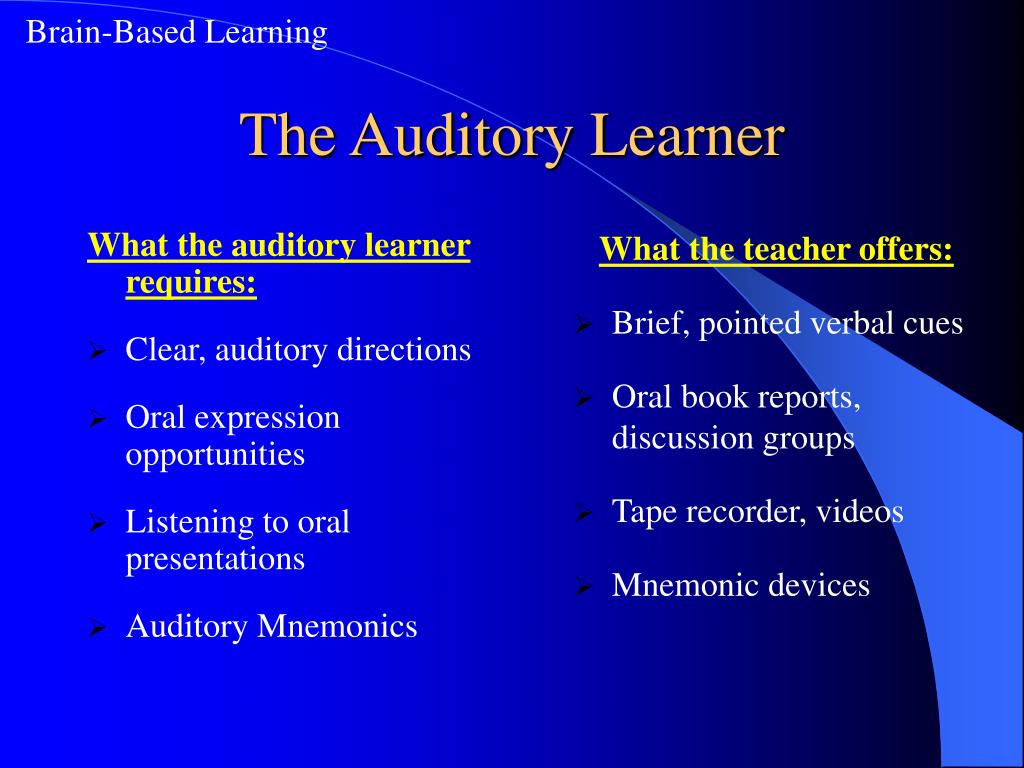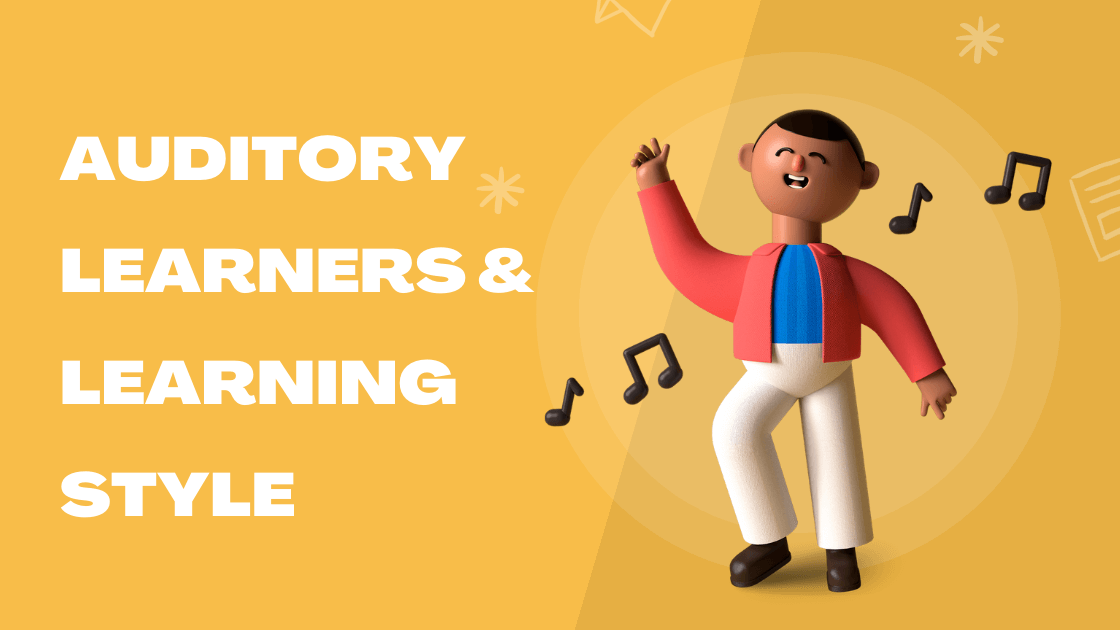
While other learners retain information in different ways, either by touch, vision, or reading, an auditory learner will focus on listening or speaking to process the information. An auditory learner prefers to listen to the information rather than read it in a text. What Is Auditory Learning?Īuditory learning refers to a learning style in which people learn most effectively by listening. Better comprehension skills and brainstormingĪre you the type of person who seems to always forget people’s faces but remembers the names you hear even years after not hearing them again? If so, this means that you might be an auditory learner, and sound means much more to you than to most people.īut what exactly does that mean? Read on and find out more about auditory learner definition, some of its many qualities, benefits, and strategies you can use to further improve this learning style.Read Smart partners with parents in the greater Tulsa area in order to give children every opportunity to master reading skills and get ahead in life. If a child has great potential and wants to excel, we help accelerate their education with advanced reading skills. If a child falls behind in reading, we help improve their reading skills so they gain confidence at school. Parents love the fact that Read Smart staff foster constant communication and take time to answer questions parents have about their child’s learning. The personalized plan designed for your child utilizes a multisensory approach to learning. Read Smart provides a nurturing, motivating atmosphere kids love. We help students master the skills needed to read at an advanced level, strengthening the foundation for all other learning. That’s why we’ve created a program that helps improve reading skills.

Many kids don’t read as well as they could. Additionally, your child learns by hearing others express what they have learned.


#AUDITORY LEARNER STRATEGIES HOW TO#
How to Know if Your Child Is an Auditory LearnerĪuditory learners learn by hearing and by speaking. Visual learners must see it to absorb it auditory learners need to hear it to master it and kinesthetic or tactile learners need to move or experience it to understand it. The three primary learning styles are visual, auditory, and kinesthetic. Most children learn through a variety of senses, yet have a primary learning style in which they gather and retain the vast majority of the information they acquire from one of their senses.

Once a parent understands their child’s main learning style, they are able to provide valuable tools to help them learn. One way parents can help their children succeed, particularly during their Pre-K–6th grade years, is to discover their primary learning style.


 0 kommentar(er)
0 kommentar(er)
